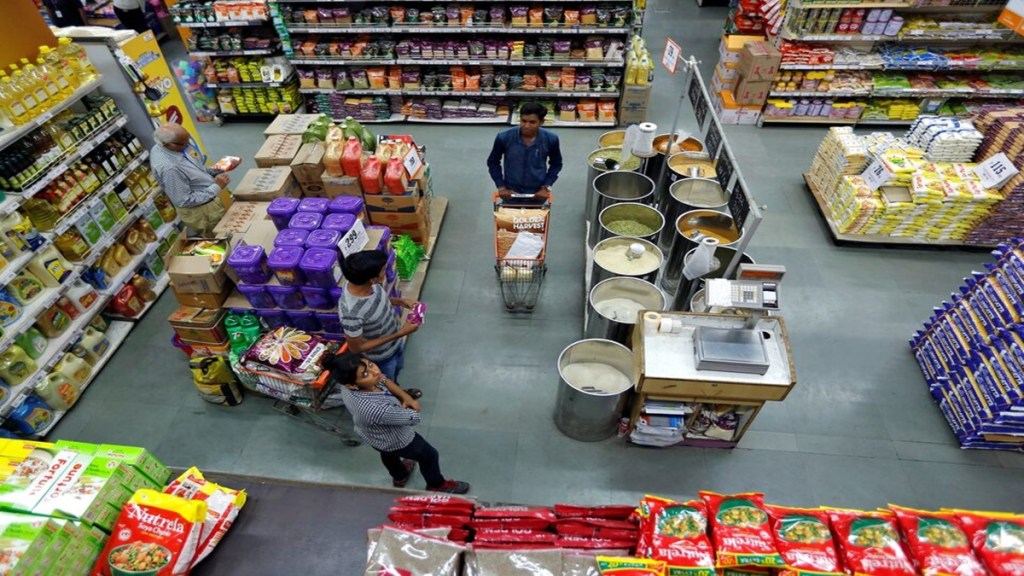India’s retail inflation fell to a more than six-year low of 2.1% in June, taking it closer to the lower range of the Reserve Bank of India‘s (RBI) tolerance band, official data showed on Monday. The sharper-than-expected easing of the key inflation print – median forecast was around 2.5% – was thanks to a favourable base, a continuing strong deflation in vegetables, and somewhat broad-based disinflation in food items.
The latest data not only vindicated the sharp 50 basis points cut in the policy repo rate earlier this month, but prompted some analysts to predict further rate cut, notwithstanding the shift in monetary stance to “neutral” in the latest policy review.
Core inflation at 4.41% was higher both on year-on-year and sequential bases. But this wasn’t much of a concern because “personal care and effects” category, which includes gold, primarily drove the relevant sub index, rather than mass-consumption items.
The Consumer Price Index-based inflation was 2.82% in May and 5.08% in June 2024. The June 2025 retail inflation was the lowest since January 2019.
Urban retail inflation in June 2025 was 2.56%, while rural print was lower at 1.72%. Among the states, inflation was the highest in Kerala (6.71%) owing mainly to the relatively higher share of gold in the state’s consumption basket, while it was just 0.75% in poll-bound Bihar. Telangana reported negative inflation (-0.93%).
Year-on-year inflation rate based on consumer food price index for June 2025 slipped into negative territory (-1.06%), with corresponding rural and urban figures being -0.92% and -1.22 respectively.
In the June policy review, the RBI stated that outlook for inflation points towards benign prices across major constituents, adding that inflation expectations are showing a moderating trend, more so for the rural households. It revised CPI inflation projection for 2025-26 downwards to 3.7%, with Q1 at 2.9%; Q2 at 3.4%; Q3 at 3.9%; and Q4 at 4.4%, with risks evenly balanced. “Notwithstanding these favourable prognoses, we need to remain watchful of weather-related uncertainties and still evolving tariff related concerns with their attendant impact on global commodity prices,”it added.
“This (the June CPI reading) will bring the Q1 inflation to 2.7% which is lower than the RBI’s estimate of 2.9%. But given the upward trajectory expected in the coming months, this benefit may not be significant, in the overall scheme of things and the RBI forecast will be within range,” chief economist at Bank of Baroda Madan Sabnavis said.
“We are not ruling out the possibility of a final 25 bps rate cut in the August 2025 (MPC) meeting, carrying forward the front-loading seen in June 2025,” Aditi Nayar, chief economist at Icra wrote.
A separate set of data released on Monday revealed that wholesale price inflation (WPI) turned negative after a gap of 19 months, declining 0.13% in June as deflation widened in food articles and fuel, along with a softening in manufactured product costs. “Negative rate of inflation in June, 2025 is primarily due to decrease in prices of food articles, mineral oils, manufacture of basic metals, crude petroleum & natural gas etc,” the government said in a statement.
As per WPI data, food articles saw a deflation of 3.75% in June, as against a deflation of 1.56% in May, with vegetables seeing a sharp drop.
“Looking ahead, food inflation is likely to remain contained, supported by healthy agricultural activity and a favourable base,” chief economist at CareEdge Rations Rajani Sinha said. “On the external front, while global commodity prices are broadly expected to remain benign, we cannot rule out intermittent spikes in midst of geopolitical conflict,” Sinha added.
ICRA expects the headline CPI inflation to recede further and bottom out at 1.9% in July 2025, despite an unfavourable base, Nayar added.
“Looking ahead, the recent decline in commodity prices, particularly crude oil, could meaningfully impact the trajectory of WPI inflation. The continued depression in WPI inflation -a prime price deflator in GDP calculations — will also statistically boost real GDP growth,” chief economist at Emkay global Madhavi Arora said.

